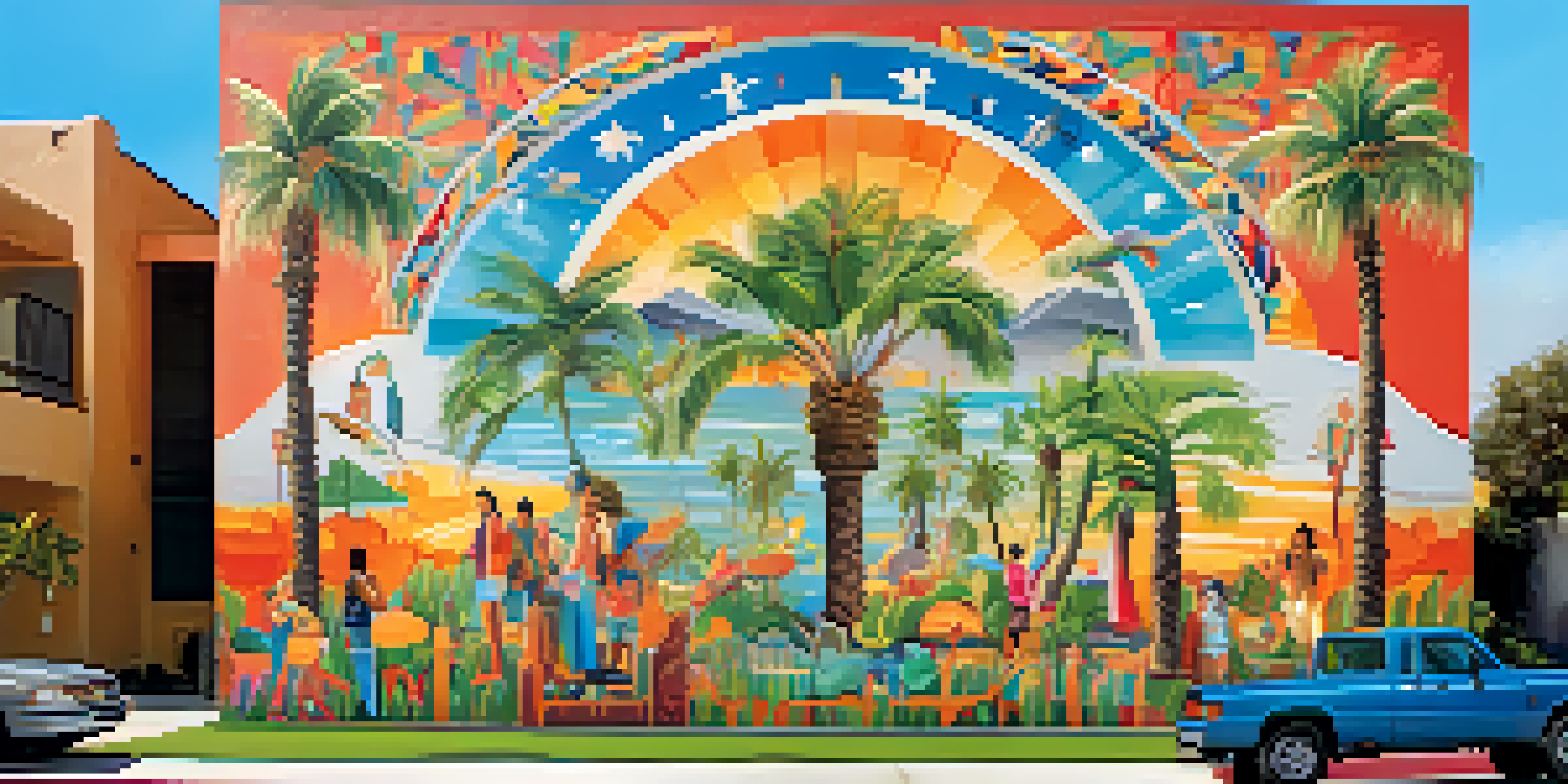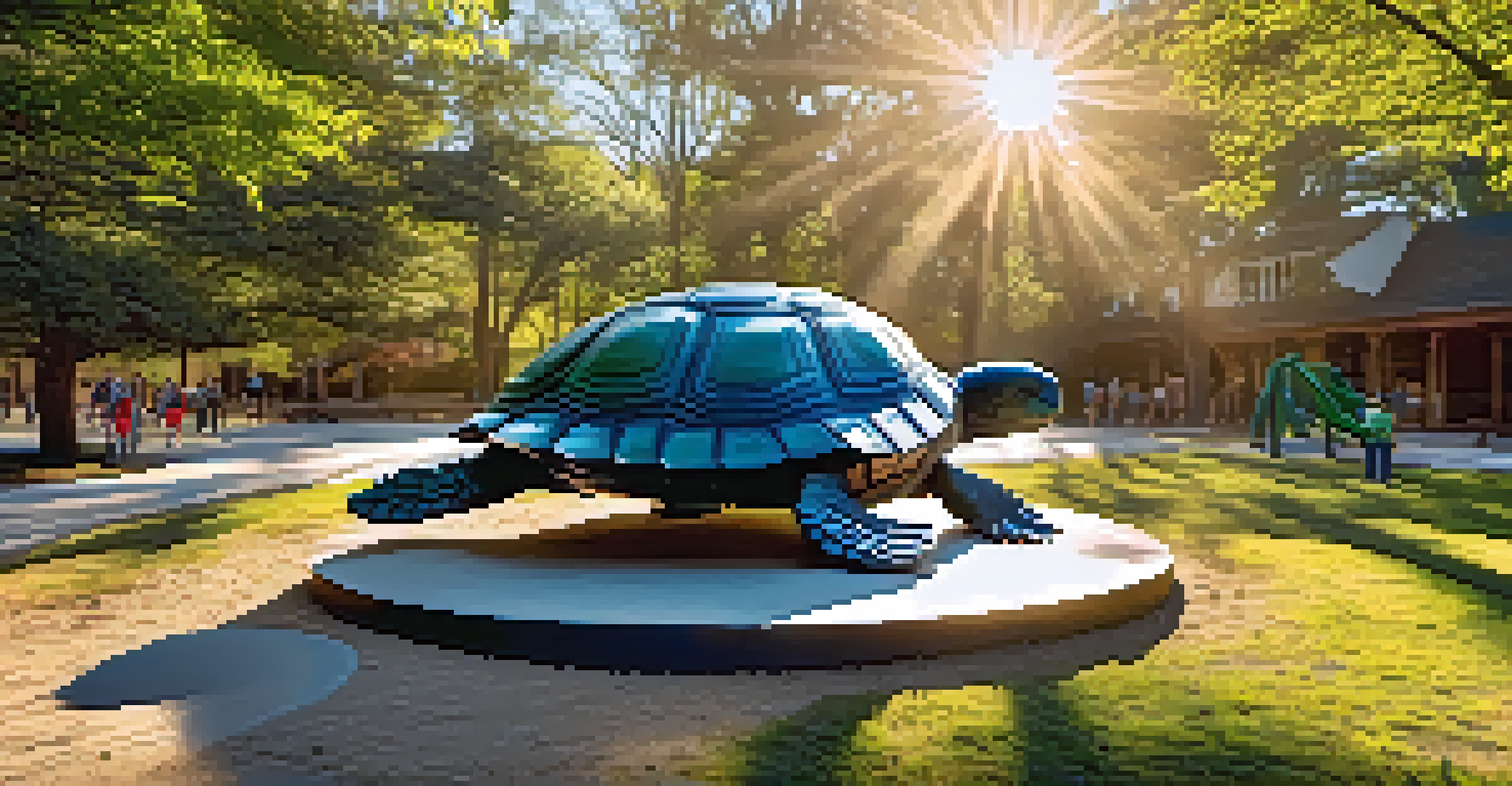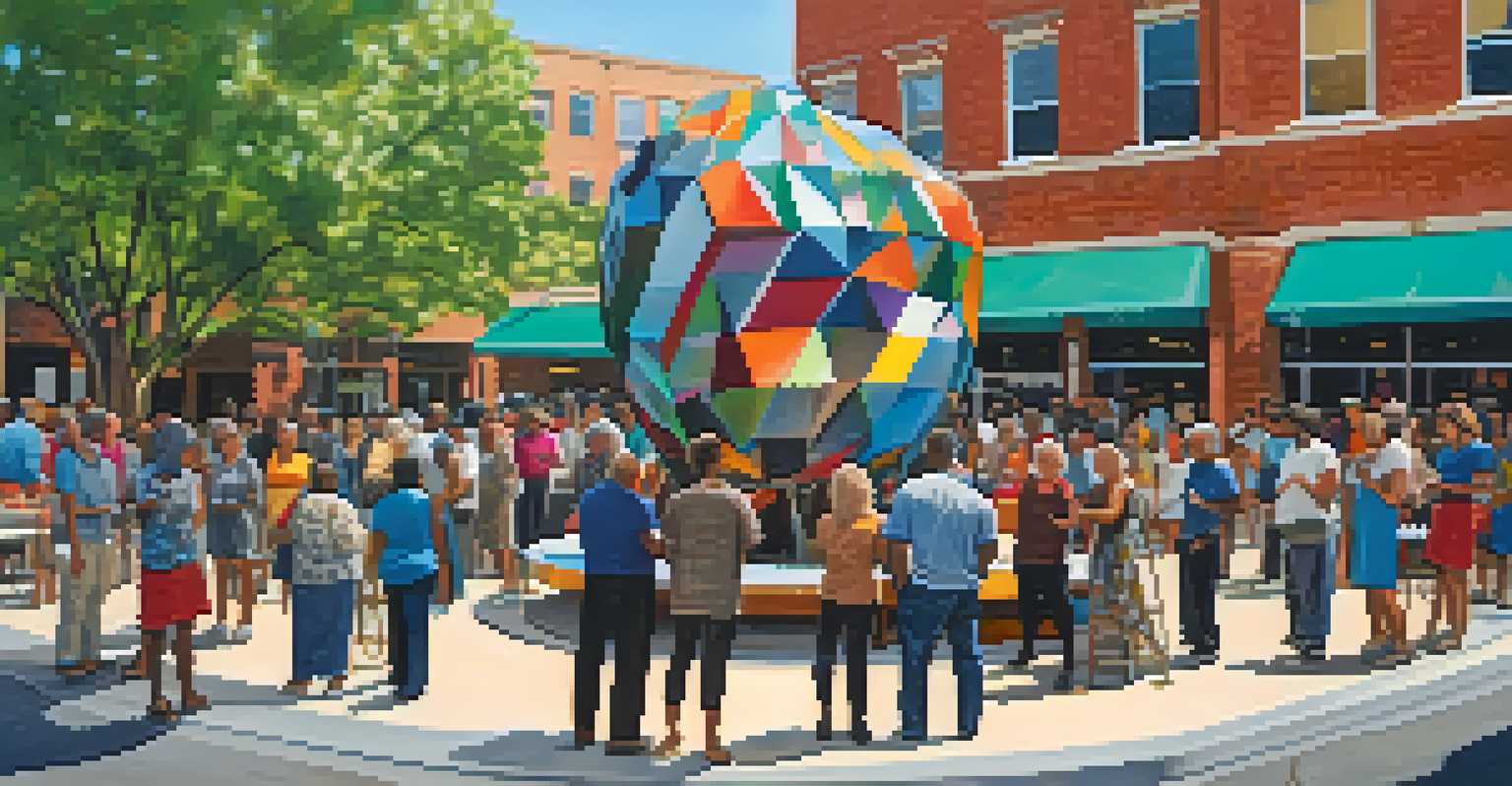San Diego's Public Art Programs: Funding and Support Systems

Understanding San Diego's Public Art Landscape
San Diego boasts a rich tapestry of public art, ranging from murals to sculptures that enhance community spaces. These artworks not only beautify the city but also reflect its diverse culture and history. Understanding this landscape is crucial, as it sets the stage for how public art contributes to local identity and pride.
Public art is a way for communities to express their identity and values. It reflects who we are and what we stand for.
The city's commitment to art can be seen in various neighborhoods, where artists collaborate with residents to create pieces that resonate with the community. This engagement fosters a sense of ownership and encourages participation in local cultural events. As a result, public art becomes a medium for storytelling, sparking conversations among residents and visitors alike.
Moreover, the presence of public art in San Diego attracts tourists, boosting the local economy. Visitors often seek out iconic installations or vibrant murals, which can lead to increased foot traffic for nearby businesses. This interconnectedness showcases the powerful role that public art plays in both community enrichment and economic vitality.
Sources of Funding for Public Art Projects
Funding for public art in San Diego comes from a variety of sources, including city budgets, grants, and private donations. The city allocates a percentage of its budget specifically for public art, ensuring that these projects remain a priority. This dedicated funding allows for the creation and maintenance of art installations throughout the city.

In addition to city funds, local organizations and foundations often provide grants to support specific art initiatives. These grants can help emerging artists bring their visions to life while enriching the community's artistic landscape. The collaborative nature of these funding sources fosters a sense of partnership between the city and its artistic community.
Public Art Enriches Community Identity
Public art in San Diego not only beautifies spaces but also reflects and fosters local culture and pride.
Private donations also play a significant role in funding public art. Local businesses and philanthropists often contribute financially or in-kind support, showcasing their commitment to enhancing the community. This blend of public and private funding ensures a diverse array of art projects that can cater to different tastes and interests.
Support Systems for Local Artists
San Diego has established several support systems to assist local artists in navigating the public art landscape. These include workshops, mentorship programs, and resources that equip artists with the skills needed to succeed. By providing these opportunities, the city encourages creativity and fosters a thriving artistic community.
Art is not what you see, but what you make others see.
Networking events and collaborative projects also serve as platforms for artists to connect and share ideas. These gatherings create an environment where emerging artists can learn from established professionals, leading to artistic growth and innovation. The supportive atmosphere is essential for nurturing talent and encouraging experimentation.
Furthermore, the city's art organizations often advocate for artists' rights and help them secure funding. By offering guidance on grant writing and project proposals, these organizations empower artists to pursue their visions confidently. This holistic support system ultimately strengthens the public art scene in San Diego.
Community Involvement in Public Art Projects
Community involvement is a cornerstone of public art projects in San Diego. Many artists actively engage with local residents during the creation process, ensuring that the artwork reflects the community's values and aspirations. This collaboration fosters a sense of pride and belonging among residents, as they see their input represented in public spaces.
Workshops and community meetings are commonly held to gather feedback and ideas from residents. These sessions not only help shape the final artwork but also empower residents to take an active role in their community. This participatory approach transforms public art into a shared experience, enriching the cultural fabric of the city.
Funding Sources Support Art Projects
Diverse funding from city budgets, grants, and private donations ensures the sustainability and variety of public art initiatives.
As a result, public art projects often become focal points for community gatherings and events. They serve as venues for celebrations, performances, and activities that bring people together. This sense of community ownership fosters a vibrant atmosphere where art and culture can thrive.
Impact of Public Art on Urban Development
Public art significantly influences urban development in San Diego by enhancing the visual appeal of neighborhoods. Well-placed art installations can transform underutilized spaces into vibrant community hubs, attracting residents and visitors alike. This revitalization often leads to increased property values and economic growth in the surrounding area.
Moreover, public art can serve as a catalyst for further development projects. As new businesses and amenities emerge in areas with notable art installations, the demand for additional services grows. This ripple effect can lead to a more dynamic and engaging urban environment, where art and commerce coexist harmoniously.
The integration of public art into urban planning also promotes sustainable development. By prioritizing artistic expression alongside infrastructure projects, the city demonstrates a commitment to creating a holistic environment that values culture. This balance between aesthetics and functionality is crucial for fostering a thriving urban landscape.
Challenges Facing Public Art Funding and Support
Despite its successes, San Diego's public art programs face several challenges, particularly in terms of funding and support. Budget constraints can limit the scope of projects, making it difficult for artists to realize their full vision. Navigating the complex landscape of grants and funding sources can also pose obstacles for emerging artists.
Additionally, public perception of art can vary widely, leading to debates about the value and purpose of public art. Some residents may view certain installations as unnecessary expenditures, while others see them as vital to community identity. This divide can create challenges when seeking support for new projects.
Community Engagement Shapes Art
Active involvement of residents in public art projects enhances community ownership and transforms art into a shared cultural experience.
Finally, maintaining existing public art installations can be a significant concern. Wear and tear from weather and vandalism can detract from the original vision, necessitating funds for repairs and restoration. Finding a sustainable solution for ongoing maintenance is essential for preserving the cultural investment made by the city and its residents.
The Future of Public Art in San Diego
Looking ahead, the future of public art in San Diego appears promising, with new initiatives and projects on the horizon. As the city continues to evolve, so too will its artistic expression, reflecting the changing demographics and cultural landscape. This adaptability is crucial for ensuring that public art remains relevant and resonant with the community.
Emerging technologies and innovative materials are also influencing the future of public art. Artists are increasingly exploring digital mediums, interactive installations, and sustainable practices to engage audiences in new ways. These advancements can breathe new life into public art, making it more accessible and engaging for diverse populations.

Ultimately, the future of public art in San Diego hinges on collaboration and community involvement. By fostering partnerships between artists, residents, and local organizations, the city can continue to cultivate a vibrant arts scene that enriches the lives of its residents. Together, they can ensure that public art remains a vital part of San Diego's cultural identity.